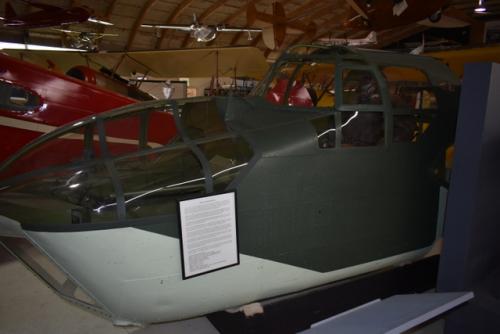Bristol 149 Bolingbroke
In early 1937 the RCAF wanted a general reconnaissance aircraft and, in accordance with Canadian policy, looked to Britain for its supply. The Bristol 142M Blenheim was being tested primarily as a bomber; the Bolingbroke, an improved Blenheim, was being designed as an interim replacement for the Avro Anson reconnaissance aircraft. The Blenheim was ruled out because of its poor visibility. This narrowed the choice to the Bolingbroke.
Although the British Air Ministry had decided to drop the Bolingbroke development, at the RCAF’s request the Bolingbroke was continued and it first flew on 24 September, 1937. When the excellent performance of the Bolingbroke became known the Air Ministry decided to redesign the Blenheim on lines making it almost identical with the Bolingbroke.
The Bolingbroke was of all-metal, stressed-skin construction. It carried a crew of four and had one fixed 0.303 Browning machine-gun firing forward and a flexible 0.303 Browning firing aft. It carried up to 1,000 lb (454 kg) of bombs.
The contract for Bolingbrokes was given to Fairchild Aircraft of Longueil, Quebec in November 1937 and covered 18 aircraft. The first Bolingbrokes had all-British equipment and were designated Bolingbroke Is. The first of these made its first flight in September 1939.
Fairchild was given the contract to develop the type as a seaplane for coastal reconnaissance. To improve the performance the RCAF ordered the 920 hp Mercury XV engines installed in place of the 800 hp Mercury VIII and so created a new version, the Bolingbroke III that was first flown as a seaplane on 28 August, 1940. Only one Bolingbroke seaplane was completed.
The principal version of the Bolingbroke was the Mk IV which had the basic British airframe fitted with Mercury XV engines and American instruments and equipment installed. Also, rubber de-icing boots were installed on the wings and tail surfaces.
The most numerous of all Bolingbroke variants was the Mk IVT for bombing and gunnery training. This was fitted with a Boulton Paul Type C turret which mounted two Browning guns. Some of these aircraft were fitted out as target tugs. 626 Bolingbrokes were delivered between December 1939 and September 1943.
Early Bolingbrokes served operationally on both the Atlantic and Pacific coasts with No.8(BR) Squadron but in this early period of the war there was no enemy action. The main duties of the Bolingbrokes were in the bombing and gunnery schools of the BCATP.
The Museum has the nose section of a Bolingbroke on display. The rest of the aircraft is in storage due to space and cost constraints.

Technical Details (Mk IV/IVT):
in dorsal turret. 1000lbs bomb load.
